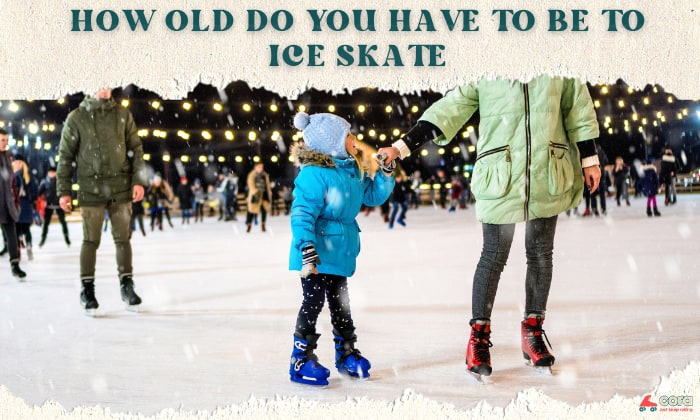Imagine: You have made plans to go skating for the whole day, and right after you have left the house for the skate park, it starts pouring. Now what? Can you roller skate in the rain?
If you want to skate, nothing can stop you from doing so in the rain. However, it is important to understand that there are potential consequences. Below, we will delve into these consequences’ details. So, read on!
Page Contents
Is It Safe to Roller Skate in the Rain?
You can decide to roller skate in the rain. But we strongly advise against it. Many risks come with skating in the rain, and they are not really worth a couple of hours of skating fun. Briefly, the stakes are:
- Higher chances of losing control, slipping and falling
- Running into difficulties with pushing forward, and thereby losing balance
- Prolonged stopping time, and limited stopping methods
- The water and dirt in wet conditions can ruin your bearings, rendering them useless
All this means you can potentially hurt yourself and the people around you.
Next, we will look at each risk in detail.
Risks of Skating in the Rain
#1 Higher chances of losing control, slipping and falling
Skating on wet surfaces can be dangerous, whether you are using inline skates or quad roller skates. It will be slippery, making you more likely to lose control, slip, and fall.
Slippery surfaces also make it difficult to predict anything in advance; thus, your skating session can become more stressful than fun. You may spend your whole time worrying about not knowing what to expect.
#2 Running into difficulties with pushing forward and thereby losing balance
Propulsion, the jargon for the ‘pushing forward’ motion, is an essential part of skating. However, it is a lot trickier to do in wet conditions – if you perform this trick, you’ll likely slide and topple over, especially if you’re a beginner.
#3 Prolonged stopping time and limited stopping methods
Braking is also much more challenging when rollerblading in the rain because of the delayed stopping time. Simply put, it takes much longer to stop your skates when the surface is wet. In fact, it can take up to 3 times longer!
Plus, you are not free to choose just any stopping method while you rollerblade in the rain. Some will simply not work.
#4 The water and dirt in wet conditions can wear your bearings down
Roller skating in the rain can cause your bearings to degrade. As time passes, you’ll notice a drastic drop in their performance.
Moreover, the dirt on wet concrete or similar surfaces will more easily lodge into and accumulate in your roller skates, resulting in rust and reducing your skates’ lifespan.
You will probably have to shell out money for repairs or replacements. Plus, you also put yourself and other people in danger if you slip and fall.
How to Skate in the Rain?
If you must skate in the rain, there are a few things to keep in mind to reduce the risks.
Prepare Your Skates
Before you go skating, it is always necessary to check your bearings’ conditions. The wheels must spin smoothly and be durable enough for wet conditions.
Hard wheels starting from grade 85A are not suitable because they can take in moisture and become harder. Consider opting for soft wheels instead.
Some roller skating communities online, such as those on Reddit, recommend DIY wheels to make them more rain-friendly. For example, you can add grooves to the wheels. These grooves make room for water to drain out and offer extra edges.
Many brands have also incorporated this into their designs. You can check out Harfang Wheels and Shark Wheels.
4 Safety tips to skate in the rain
#1 Adjust Your Stride
If you push too far out to the side, you can lose your balance and fall on your face, even if you are going in a straight line.
Therefore, regardless of how experienced you are, aim for shorter strokes and adopt a slow speed. Pay more attention to avoid pronation on your striding leg. Remember that you should push down on your skates with your legs bending low.
#2 Know The Best Stopping Methods
As stated briefly above, some stopping methods do not work in the rain. But being able to stop is just as important as being able to skate if you choose to do so while it is raining.
The stopping methods that we recommend are T-stop, Soul Slide, and Power Slide. However, they can be difficult for beginners, especially in wet conditions.
If you are new to skating, use heel brakes and spare enough time to compensate for the delayed brake time.
#3 Adjust Your Turns
Use slow and short strides to turn safely while on the road and in the rain. It is best not to go for fancy rotations like crossovers, lunge turns, and parallel turns. Save these for a sunny day!
#4 Avoid Slopes
It is bad to skate in the rain, and even worse to skate up or down a slope.
- For the former, it will be even more difficult than usual. You must use small strides along with a high cadence rhythm, so it is tough to pick up enough speed. You will very quickly become exhausted if you roller skate uphill.
- For the latter, you might go too fast, fall, and get seriously injured. Besides yourself, you might hurt others too. If you have to go down a slope, make sure to exert braking pressure constantly.
To ensure rollerblade safety, you should steer clear of slopes until you are completely comfortable skating on wet ground.
Consider other places to roller skate outdoors.
Frequently Asked Questions (FAQs)
Is roller skating dangerous in the rain?
Yes. It is dangerous to go roller skating in the rain. We do not recommend doing this. But if you must go skating, follow the tips above to minimize the risks.
Can you roller skate after it rains?
Since roller skating while it is raining is not recommended, this is quite a logical question. Unfortunately, the answer is still no.
After it rains, the ground will still be wet. To ensure you do not slip and injure yourself, it is best to go rollerblading on asphalt and other surfaces when they are fully dried.
How long does it take for skate parks to dry after a downpour?
If there is ample amount of sun and wind the following day, skate parks will dry more quickly. But if there are only clouds and no wind, it will take longer to dry – up to more than a day.
Can you go skating in cold weather?
Skating in cold weather does not entail the same risks as skating in the rain. Typically, you can if you can endure the cold. If the low temperatures do not bother you and your motivation or will to skate is very high, it is possible to skate in cold weather.
If you choose to do this, we recommend warming up beforehand with stretches and lubricating your bearings.
Does water damage roller skates?
Yes. Water can damage roller skates. It can find its way into your bearings and rust them within a short amount of time. Rust-locked bearings leave your skates useless.
In addition, dirt, grime, and other tiny debris can make it past the shields of your bearings, lodging in place and speeding up wear.
How to clean your bearings immediately after skating in the rain?
The five steps that we suggest for cleaning bearings are:
- Step 1: To take off your bearings, first, remove the wheel by unscrewing the axle nut.
- Step 2: Soak your bearings with a specialized bearing cleaner in a closed container and shake them a few times. If you don’t have a specialized cleaning solution at home, rubbing alcohol or nail polish remover will do.
- Step 3: Let the bearings air dry. To speed up the process, use a clean towel to absorb the excess moisture.
- Step 4: Lube the bearings with grease or speed cream. After a few drops, try spinning the bearings. If it can move freely, the bearings are good to go.
- Step 5: Reassemble the skate.
The key is to do it right after you skate. Leaving the bearings unattended will likely ruin your skates.
Related post: How to properly clean roller skate wheels?
Conclusion
Now, you know the complete answer to, “Can you roller skate in the rain?” To reiterate, we do not recommend doing this. Save skating for sunny weather! But if you have to skate, apply the tips above to minimize the associated risks.
Don’t forget to wear proper protective gear as well. Knee and elbow pads, wrist guards, and goggles will keep you safe even in a nasty fall!
Have fun skating.

Harrison is a skating enthusiast who picked up the sport during her student exchange years in Canada. She has been a skating coach for children and teens for 3 years and now holds classes as a freelancer. Harrison entwines her experience leading skating classes in the content published on Cora to help readers fall in love with skating, just like she did.










